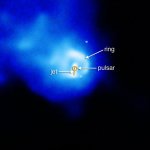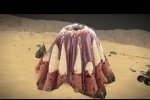Hello guy! I'm working with the sound analysis, but I have a LOT of data! A Hell lot! And I need help.
First, kudos and many thanks to the commanders that did record the sounds and submitted them to my database. That was REALLY helpful!
TL R:
R:
If you are good with music and tone recognition, I need your help:
1) Go to this database
2) Select one of the barnacle sounds
3) Use an editor (Audacity) to increase its speed up to a 400%.
4) You hear those horns? Do you recognize the tone?
5) Please note the notes sequence and send me a PM with them!
IE: Recording number 2 of the database: B F F B F (pause) B# G G B# G C (Pause), etc.
Full explanation:
It is obvious that every recording has a different speed pattern, and I'm trying to determine it. But for doing that I need to find the "starting point" of the sound signal. For that I need to match two different sound recordings, and the best way to do this is by noting the "horn" sound sequences.
If you can spare some time, please go to the database, pick a random recording that doesn't have the notes sequence noted on its side, accelerate it a 400% and take not of the sounds. I will work my way around with those sequences to find an starting point for the sound signals, if there is any.
The database is here:
https://docs.google.com/spreadsheet...HKXgVkGZJKTBwzsHVencr5TR3s/edit#gid=688308378
MY RESEARCH SO FAR:
I have been comparing two recordings done in exactly the same conditions (using the 2nd and 3rd submissions), with intact barnacle and no nearby ship other than the SRV. I was expecting to find that they would be identical, but actually, they are not. Even if at some points the sound sequences seem to follow exactly the same timing, this coincidence is broken the further the sound signal progresses. This makes me think that actually the Barnacle Signal bay evolve with time, maybe becoming faster or following some sort of speed cycle. But to do that I need to find exactly the starting point of the signal, if there is any.
I think that, at this point, the most obvious search way will be to take note of the "horn" sounds noutes when the signal is accelerated a 400%. From this one we may find a coincidence which would mark the "signal start", simplifying a lot future researchs.
Researchers, we need your help! This is too much work for a single commander!


